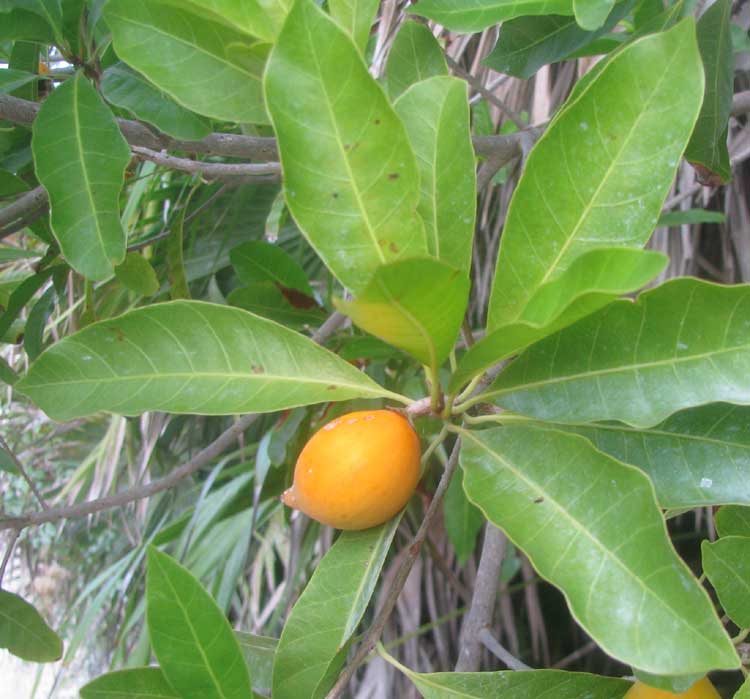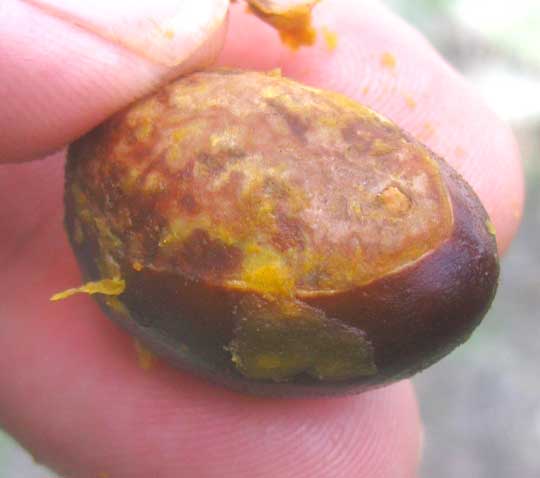Excerpts from Jim Conrad's
Naturalist Newsletter

from the September 25, 2011 Newsletter issued from Mayan Beach Garden Inn 20 kms north of Mahahual; Caribbean coastal beach and mangroves, ~N18.89°, ~W87.64°, Quintana Roo state, MÉXICO
CANISTEL
Beside the white sand road a 15-ft-tall tree (4.5m) bearing leathery, evergreen leaves like the North's Persimmon tree caught my attention. It bore yellow- orange, persimmon-like fruits. "Another persimmon," I thought when I saw it, because in July we'd found real persimmons maturing here -- though of a species different from North America's. You might like reviewing that July tree at www.backyardnature.net/yucatan/persimmn.htm.
Now look at this week's similar species at the top of this page.
The first hint that this week's tree is NOT a persimmon is that the fruit is asymmetrical, with a blunt little nose off to one side. Persimmons are spherical. Also, at a persimmon's base typically you find the remains of a large, woody calyx. Our present fruit's calyx isn't particularly large. The main hint that we don't have a second persimmon species, though, is that when I bit into the fruit the flesh was sweet, and a little waxy, similar to our July persimmon, but inside instead of several seeds of the kind you expect in a persimmon, there was just one. You can see the large, two-toned seed I gnawed clean below:

The dark, lower part of that seed is the seed coat, which on most seeds covers nearly the entire seed. The paler, top part is the hilum. In most seeds the hilum is no more than a small scar formed where the seed's umbilical-cord-like "funiculus" once connected the seed to the ovary containing it, or fruit wall. On the seed in our picture the hilum is enormously enlarged, the same way it is on Buckeye and Horse Chestnut seeds. And on the big seeds of the tropical fruit called Mameys...
Down here we have no relatives of Buckeyes or Horse Chestnuts but several species are related to the delicious Mamey. This helped me figure out that what we have here is Canistel, POUTERIA CAMPECHIANA, belonging to the same family as the Mamey -- and the Chicozapote for that matter -- the Sapodilla Family, or Sapotaceae.
We've seen Canistel before, but it's cultivated form, which produces a much larger fruit, but with the same good taste. You might want to check out that fruit at www.backyardnature.net/yucatan/canistel.htm.
Sometimes Canistel is called "the Maya Fruit" because the Maya like it so much. In fact some experts say that Canistel is one of the most underrated of tropical fruits, and should be planted much more than it is.